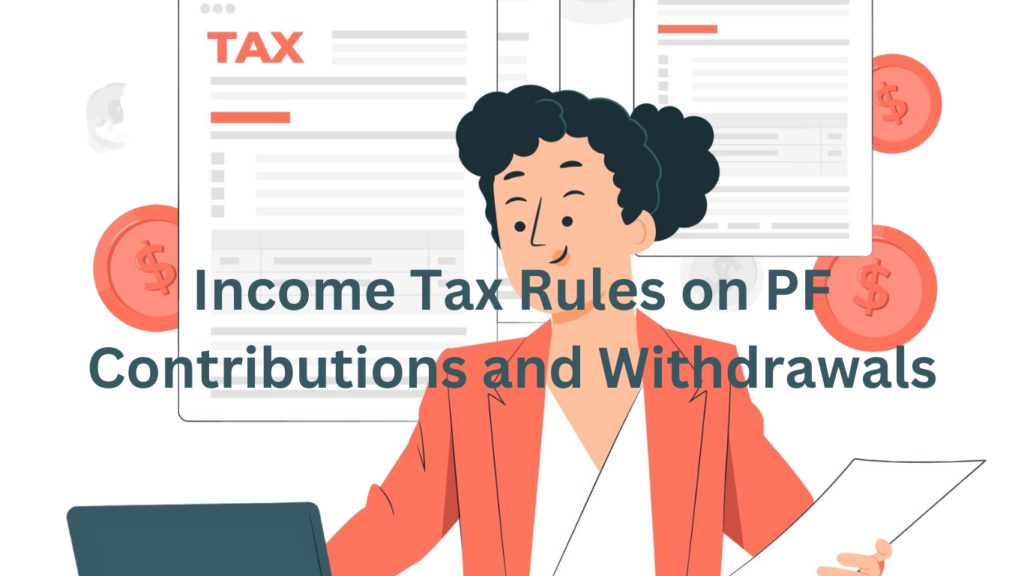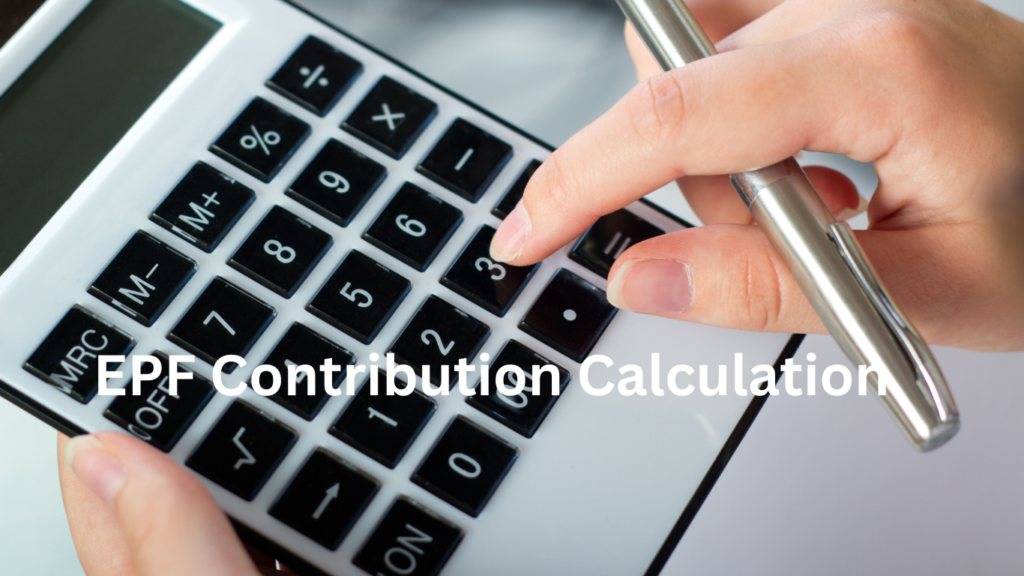Understanding your EPF (Employees’ Provident Fund) contributions is essential for retirement planning and tax savings. This guide explains how Tax Rules on PF Contributions and Withdrawals are calculated, accumulated, and taxed. We’ll also simplify the recent changes in Income Tax rules, helping you understand how PF contributions, interest, withdrawals, and pensions are taxed. Stay informed to optimize your savings and make the most of your retirement fund..

Why the Government Tax Rules on PF Contributions and Withdrawals
The reason for taxing PF contributions lies in fairness. Previously, wealthy individuals could deposit large sums into their PF accounts and enjoy tax-free interest. This created a situation where high-income individuals received a tax benefit not available to the middle class. To address this, the government introduced changes to tax PF contributions beyond certain limits.
Types of PF Contributions and Taxability
Your PF contributions come from two sources:
Employee’s Contribution: This is the amount deducted from your salary, typically at a rate of 12%.
Employer’s Contribution: Your employer matches your contribution, also at 12%, with a portion going to your PF and a portion to your pension.
Employee’s Contribution: You can claim a tax deduction of up to Rs 1.5 lakh under Section 80C of the Income Tax Act. If your total income is Rs 10 lakh and you contributed Rs 1.5 lakh to PF, your taxable income reduces to Rs 8.5 lakh.
Employer’s Contribution: This part is tax-exempt, but there are conditions:
If the employer contributes more than 12%, the excess is taxable.
If the annual contribution from the employer exceeds Rs 7.5 lakh, any excess amount becomes taxable.
visit the official epfo website for more details.
Tax on PF Interest
Interest on your PF accumulates annually at around 8-8.5%. According to the Budget 2021 rules:
If your annual PF contribution is less than or equal to Rs 2.5 lakh, the interest remains tax-free.
If your annual contribution exceeds Rs 2.5 lakh, interest on the excess is taxable.
For example, if you contribute Rs 2.88 lakh in a year, interest on Rs 2.5 lakh will be tax-free, but interest on the remaining Rs 38,000 will be taxable.
Understanding Tax Rules on PF Withdrawals
You can withdraw from your PF under certain conditions, such as for medical emergencies, home construction, or after leaving a job. However, tax treatment varies based on how long you’ve held your PF account.
Withdrawals After 5 Years: If you have held your PF for over 5 years (even if across multiple jobs), withdrawals are tax-free.
Withdrawals Before 5 Years: If you leave your job voluntarily, the withdrawal amount is taxable.
If you had to leave due to reasons beyond your control (e.g., illness, company shutdown), the withdrawal is tax-free.
TDS (Tax Deducted at Source): PF withdrawals before 5 years may attract TDS, meaning tax is deducted before you receive the money. You can claim this TDS when filing your tax return if your total income is below the taxable limit.
Read This Also: Full and Final Settlement in EPF online
Tax on PF Pension
If you have worked for over 10 years and contributed to PF, you are eligible for a pension after retirement. However, this pension amount is considered as taxable income and is added to your salary. You can claim a standard deduction of Rs 50,000 against it. Since most PF pensions are modest (Rs 2,000 – Rs 4,000 per month), they often fall below the taxable limit after the standard deduction.
What About PF Advances and Account Types?
When you withdraw an advance from your PF, the question arises: does it come from the taxable or non-taxable portion of your PF account? The answer is currently unclear, but withdrawing from the taxable portion would reduce your future tax liability. The tax impact on advances may become clearer in the future as the rules evolve.
Read This Also: advance epf claim process
Checking Your TDS and Claiming Refunds
If TDS has been deducted from your PF withdrawal, check your Form 26AS on the Income Tax website after a month to ensure it reflects the deducted TDS. If you’re below the taxable limit, file a return to claim this TDS back.
These new tax rules on PF contributions are designed to create a fairer system. While high-income individuals may feel the impact, understanding these changes can help middle-class individuals manage their PF contributions, withdrawals, and pensions more effectively.
The recent changes to the Income Tax Act have created a more balanced system for taxing Provident Fund contributions, addressing the disparities between different income groups. By understanding how your contributions, interest, and withdrawals are taxed, you can better plan your financial future and make informed decisions about your retirement savings. Keep track of these changes to optimize your tax benefits and manage your PF more effectively.
If you found this guide helpful, share it with friends who are PF members to help them stay informed.
FAQ: Tax on EPF Contributions and Withdrawals
Q1. How much is the employee’s contribution to the EPF?
The employee contributes 12% of their monthly wages (Basic Pay + DA) to the EPF.
Q2. Is the employer’s contribution to EPF taxable?
The employer’s contribution up to 12% is tax-exempt. However, any excess contribution or contributions over Rs 7.5 lakh annually are taxable.
Q3. How is PF interest taxed?
If your annual contribution exceeds Rs 2.5 lakh, the interest on the excess amount is taxable. For contributions of Rs 2.5 lakh or less, the interest remains tax-free.
Q4. When are PF withdrawals taxable?
- Tax-Free Withdrawals: If you’ve held your PF for over 5 years, withdrawals are tax-free.
- Taxable Withdrawals: If you withdraw your PF before 5 years, the amount is taxable unless you left due to unavoidable circumstances like illness.
Q5. Is my PF pension taxable?
Yes, your PF pension is taxable as income after retirement. However, you can claim a standard deduction of Rs 50,000 against it, and for most, this keeps the pension below the taxable limit.
Q6. How can I claim a refund for TDS on PF withdrawal?
If TDS is deducted from your PF withdrawal, check Form 26AS on the Income Tax website. If your income is below the taxable limit, you can file a tax return to claim a refund.
Q7. Are PF advances taxable?
The tax impact on PF advances remains unclear. It’s suggested that withdrawing from the taxable portion could reduce future tax liability, but the rules are still evolving.


